Battery free, wireless internal corrosion monitoring
Is this your challenge?
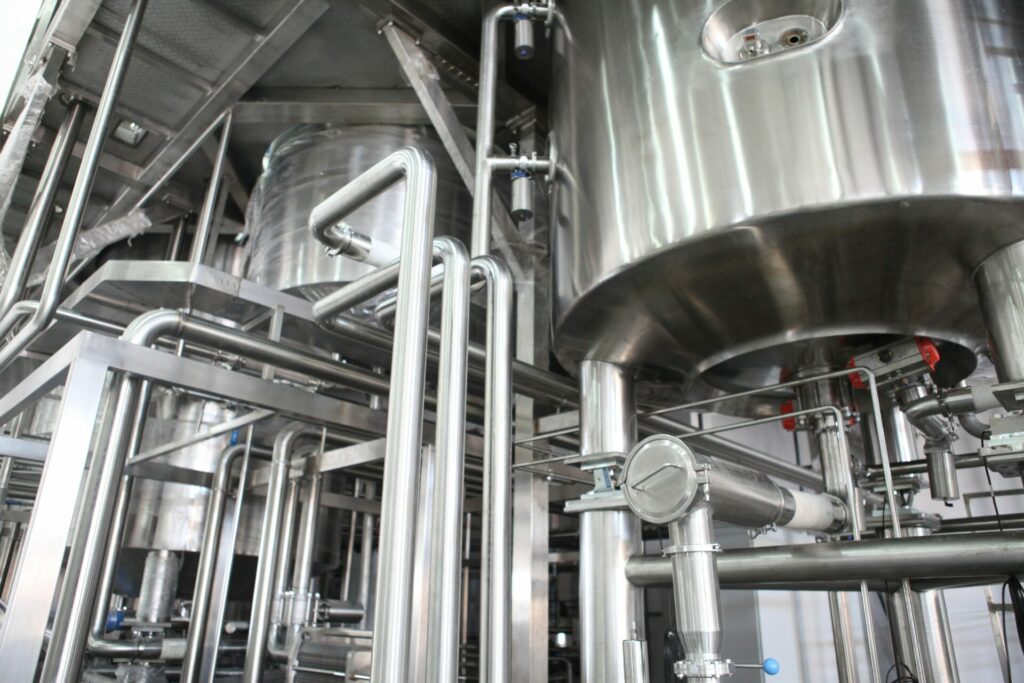
Internal corrosion in pipework and vessels is a major problem for any asset operator. It poses a serious risk to safety and can result in serious damage as well as financial losses associated with downtime.
Thickness data helps the operator to assess the condition of the asset and monitoring the rate of thickness loss can enable predictive maintenance, which in turn helps to optimise operations and reduce costs.
On assets such as those found on a nuclear site, there could be thousands of locations (from pipework to historic waste container) where a thickness measurement needs to be taken. Ultrasonic wall thickness measurements on pipework and vessels provide an invaluable insight into internal corrosion and erosion activity on an asset. Thickness data helps the operator to assess the condition of the asset and monitoring the rate of thickness loss can enable predictive maintenance, which in turn helps to optimise operations and reduce costs.
The two most common methods of acquiring thickness data (Manual Ultrasonic Testing (Manual UT), Permanently Installed Monitoring Systems (PIMS)). Unfortunately, the benefit of these conventional ultrasonic testing equipments can be limited either because of the environment constraints, their deployment procedures, the associated time-consuming process. Overall, this is a monitoring process prone to human error and limits the benefits of accurate trending of internal corrosion.
inTechBrew’s insight

Inductosense are a team of ultrasonic sensor specialists based in Bristol, UK. They design, develop and integrate ultrasonic sensing, data collection, and software solutions for asset integrity monitoring. A company stemmed from an innovative idea patented in 2014 and that has since deployed sensors in volume across the globe and across industrial sectors. Thickness data helps operators assess the condition of their assets, and monitoring the rate of thickness loss can enable predictive maintenance, which in turn helps to optimise asset integrity operations.
Inductosense’s WAND system uses a combination of battery-free, ultrasonic thickness sensors that are permanently installed to the surface of components, often in hard-to-reach areas. The WAND is a handheld data collection tool that provides power wirelessly to the sensors, and then measures the thickness of the material to which it is attached.
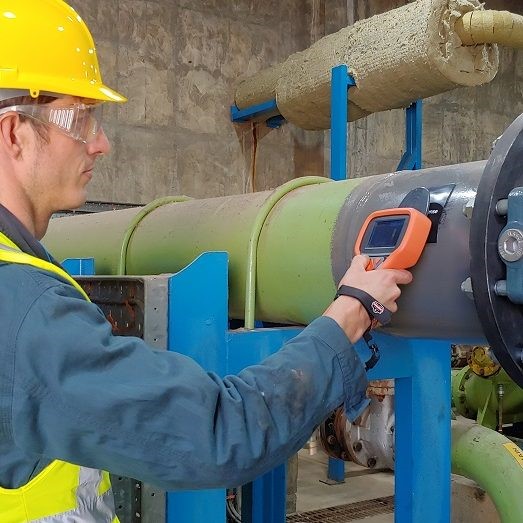
At inTechBrew, we believe that the WAND system can remove the limitations associated with conventional methods, provides an alternative, modular approach to internal corrosion/erosion monitoring and offer the following advantages:
- Battery free, wireless,
- Accurate, reliable thickness data,
- No network set-up required to collect data,
- Acquire data easily from difficult-to-access locations.
User case

HITACHI – Nuclear Power Plant Inspection – Demonstrator
Hitachi-GE Nuclear Energy Ltd. Hitachi, Ibaraki, Japan
In partnership with Hitachi, Inductosense carried out a trial to test the performance of the WAND sensors in a simulated nuclear power plant environment. The trial in this representative environment confirmed the following:
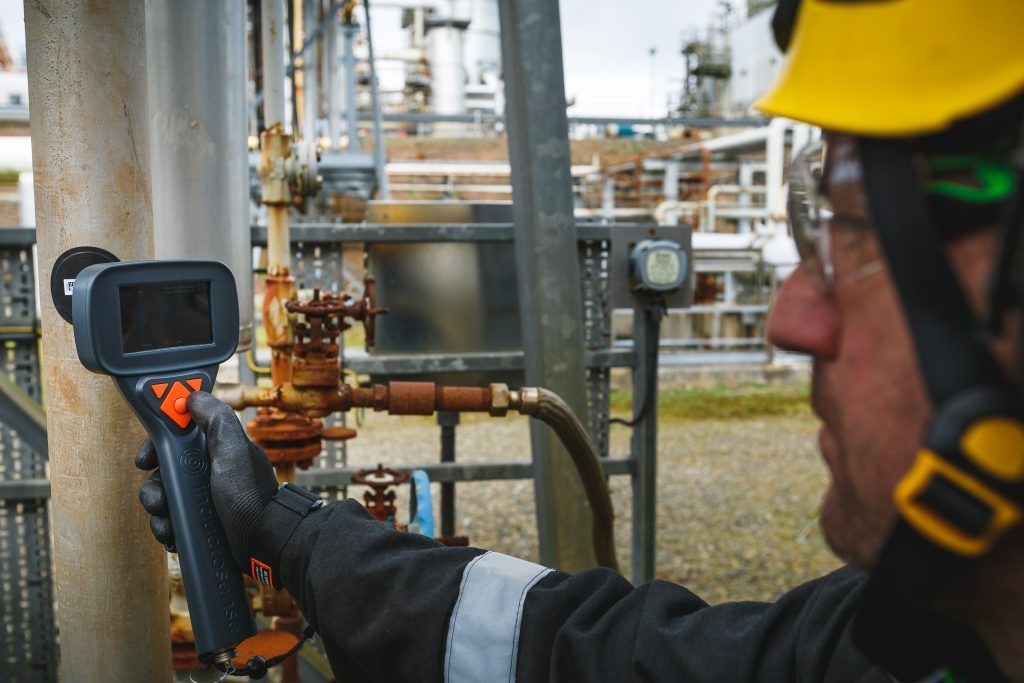
Efficiency:
- Piping systems on a nuclear power plant are subject to aggressive corrosion, which cause thinning of the pipe wall. It is necessary to take thousands of thickness measurement from specific locations on this pipework manually during the outage of the plant.
- Much of the pipework is covered in a layer of insulation which needs to first be removed (and then replaced afterwards) which can be expensive. This process takes time and thus increases the exposure of the inspector to radiation.
- The data collection with the WAND system is quick, taking a matter of seconds, thus helping to minimise inspection time.
- The WAND sensors have the capability to monitor different thickness of pipe walls under insulation (used in nuclear power plants), without needing to remove the insulation itself.
- The WAND system offers operators a non-intrusive, semi-automated or automated corrosion monitoring solution, that is cost-effective, simplified and digitised.
Performance under insulation:
- The WAND thickness monitoring sensors have a low-profile design which means they can be embedded underneath insulation. They are wirelessly activated by the WAND handheld data collector, which means thickness readings can still be acquired without removing the insulation itself.
- Furthermore, when silicate calcium (commonly used as insulation in nuclear power plants) was placed between the probe and the sensor and it was shown that there was no change in the thickness measurements from the sensors with or without the insulation in place.
Tolerance to radiation:
- The WAND sensors are battery-free, which means prolonged exposure to radiation would not impact their functionality.
- The sensors were exposed to radiation (gamma rays from Co-60 – 18kGy) corresponding to the total exposure for 10 years in a primary containment vessel. There was no deterioration in the signal from the sensors following exposure.

The technology: Inductosense wand system
The Inductosense WAND system offers operators a non-intrusive, semi-automated or automated corrosion monitoring solution, that is cost-effective, simplified and digitised. The WAND 3-parts solution generates accurate internal corrosion monitoring and trending. It offers an effective, wireless and contactless thickness monitoring solution comprising:
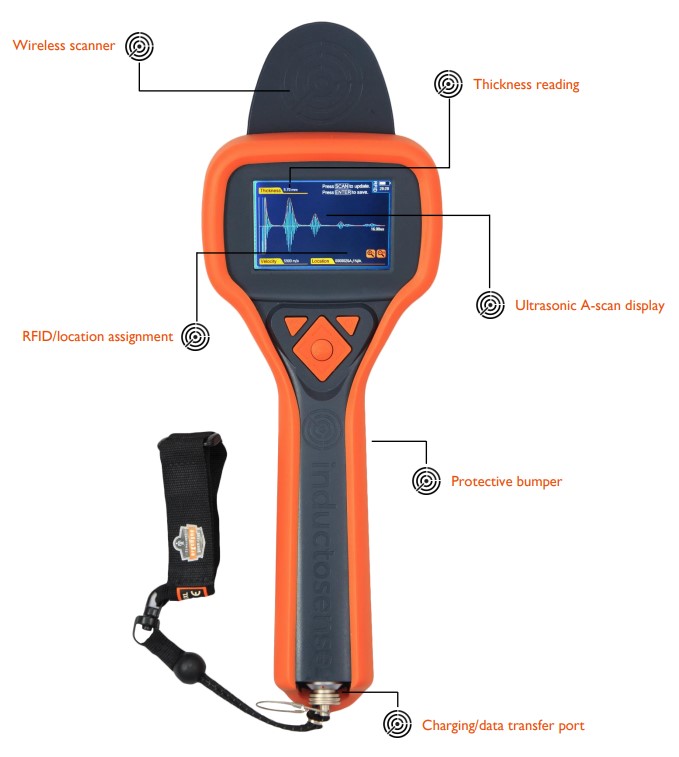
- A compact, battery free sensor WAND TMS installed at thickness monitoring locations across an asset in volume and cost effectively.
- Ultra-thin, embeddable passive ultrasonic thickness sensors,
- Battery-free,
- Zero maintenance, no calibration,
- 65mm OD, 1mm thick,
- Resolution <0.05mm,
- ATEX/IECEx for Zone 0 (Ex ia IIC T4…T3 Ga),
- Predicted lifetime>10 years.
- A handheld WAND data collector WAND HDC to acquire the data from the sensors wirelessly (an RFID is associated with the sensor, detected by the WAND during the measurement and enables tracking of the measurement from the same location every time. An electromagnetic signal is used to activate the battery free sensor. When activated, the sensor generates an ultrasonic pulse which is reflected by the back wall of the structure and the signal is then coupled back to the WAND electromagnetically.
- Minimal training required, collects a reading in under a second,
- User interface displays live thickness and A-scan in the field,
- Data can be imported directly or extracted as DAT or CSV files,
- Integrated RFID reader for tagging of the WAND sensors.
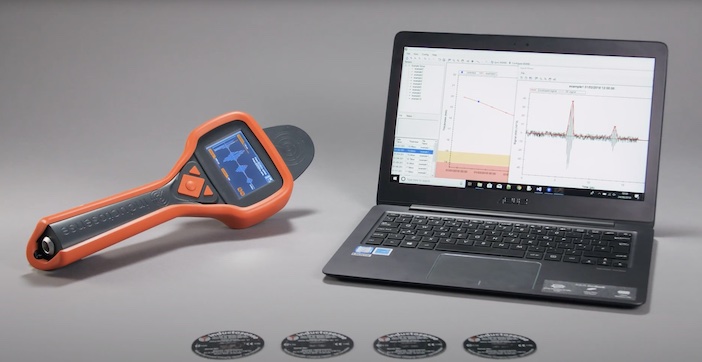
- The i-DART (Inductosense Data Analysis and Reporting Toolkit) is a software package that enables configuration of WAND devices, as well as management, analysis, trending and reporting of WAND thickness data.
- Configure WAND sensors and devices,
- WAND-RDC live readings and scheduling,
- Manage and analyse thickness data and trend graphs,
- Available as universal app and as browser-based.
Data collection can also be done automatically with the WAND-RDC, a battery-powered device designed to work with WAND sensors. Up to 8 WAND sensors can be connected per RDC module, to allow for thickness readings to be taken on demand, or automatically at predefined intervals, and the data can then be collected wirelessly via Bluetooth:
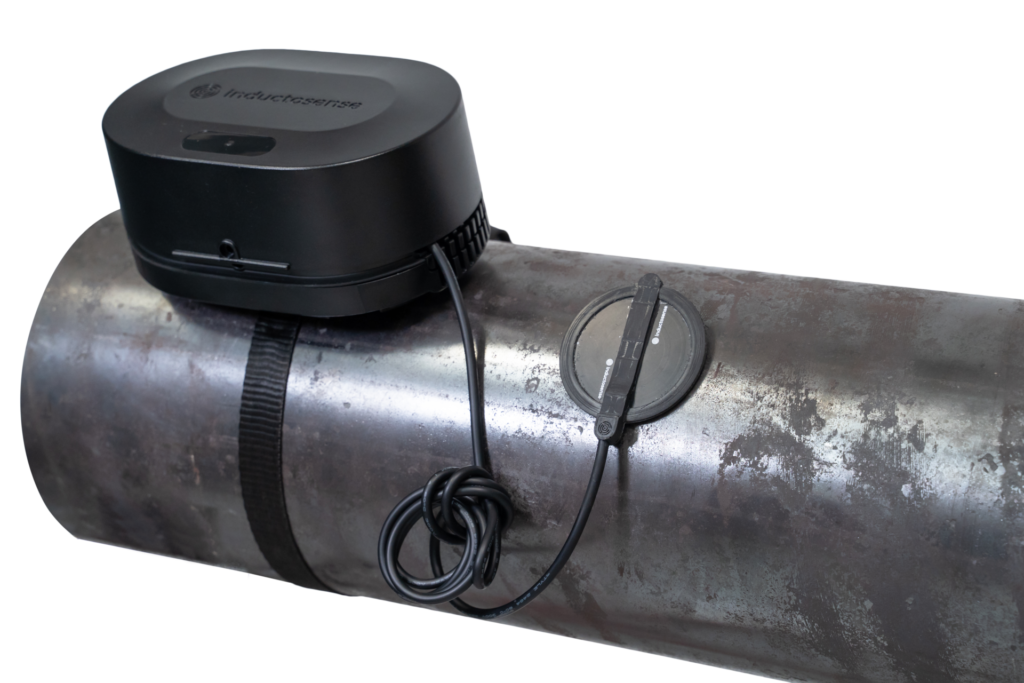
- 19x13x9 cm,
- Up to 200m wireless range,
- >5-years battery life,
- Inbuilt temperature sensor,
- Bluetooth enabled, up to 100m wireless range,
- ATEX/IECEx approved for Zone 0, IP67.
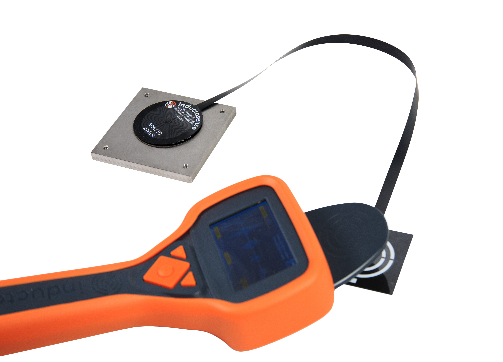
Another accessory for the WAND system is the ECHO extension cable which can be activated wireslesly even when underneath a layer of material such as coating, thick layer of insulation or jacketed insulation:
- Flexible and robust,
- Set length varieties from 45cm up to 6m,
- Enables thickness monitoring
- Allows measurements to be acquired from underneath insulation, composite repairs or obstructed areas.
The WAND system has been designed to make thickness monitoring easier, safer, and more cost-effective. Thickness data helps operators assess the condition of their assets, and monitoring the rate of thickness loss can enable predictive maintenance, which in turn helps to optimise asset integrity operations. It can be retrospectively installed and implemented within the harshest of environments.
The WAND system has a number of advantages alternative thickness monitoring methods (e.g., PIMS, Manual UT):
- The WAND sensor is the most cost effective permanently installed thickness technology monitoring on the market, the sensors have a lifetime of at least 10 years
- The WAND sensors generate precise, free of human-error and repeatable thickness readings for accurate, reliable monitoring of internal corrosion.
- This data can be trended for better informed maintenance decision-making, and in turn help to reduce downtime and optimise processes.
- The WAND system can acquire data easily from difficult-access locations (e.g., from underneath insulation and coatings, without needing to remove them).
- Acquiring readings with the WAND also takes a matter of seconds. This can significantly reduce the time associated with inspection, and can further save on labour costs.
- No network set-up required to collect data, no logistical challenge, data can be acquired straight away with no IT infrastructure needed.
- Data collection can be adapted to your constraints. Either the WAND handheld data collector (WAND-HDC), or the WAND remote data collector (WAND-RDC), as well as an assortment of accessories such as poles to reach sensors at height without the need for scaffolding.
Any questions ? Interested in another corrosion monitoring system ? Do not hesitate to contact us directly, we will help you find a fit-for-purpose, cost-efficient solution to your challenge.

Unit 3, Kings Business Park
Feeder Road, St Philips,
Bristol, BS2 0TZ, UK
Phone: +44 (0) 117 403 4047
E-mail : info@inductosense.com
Website: www.inductosense.com



